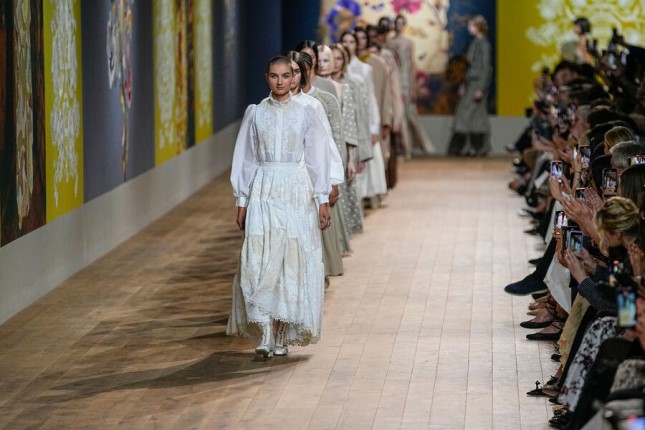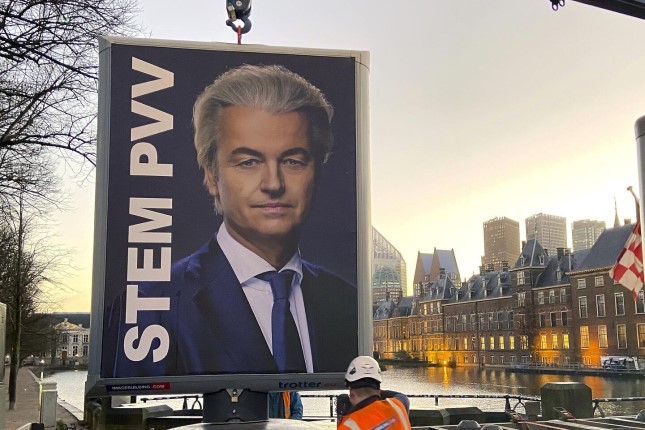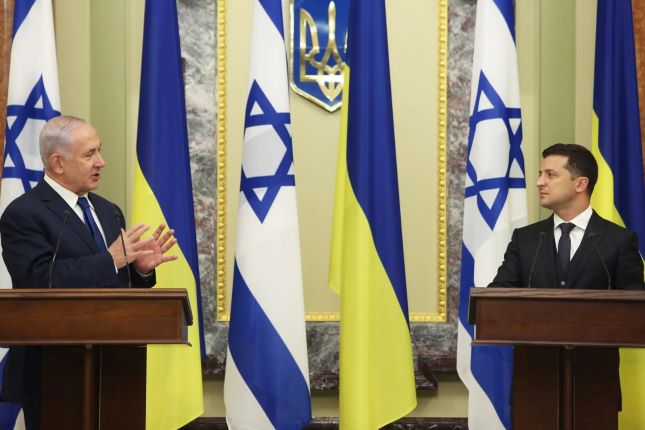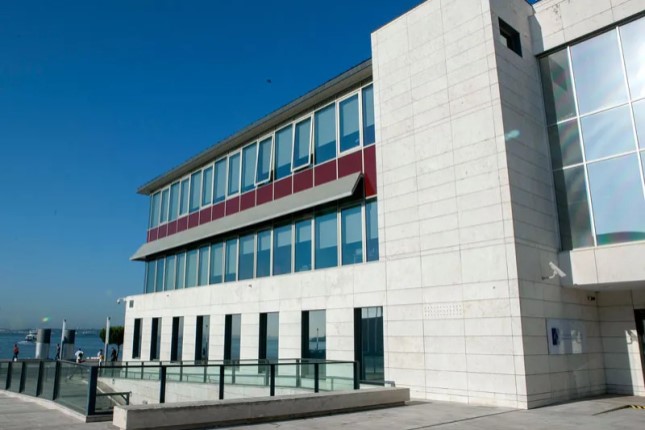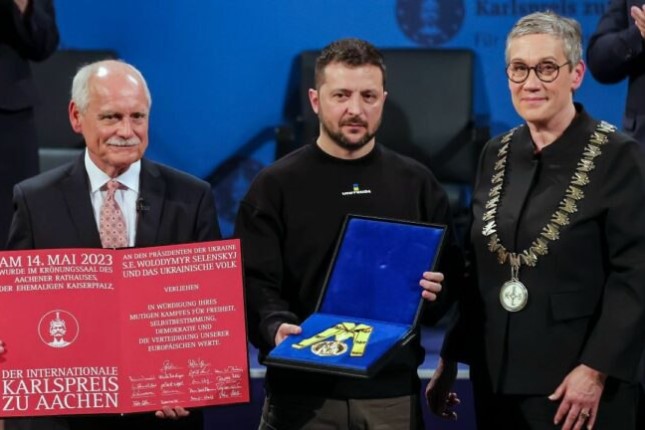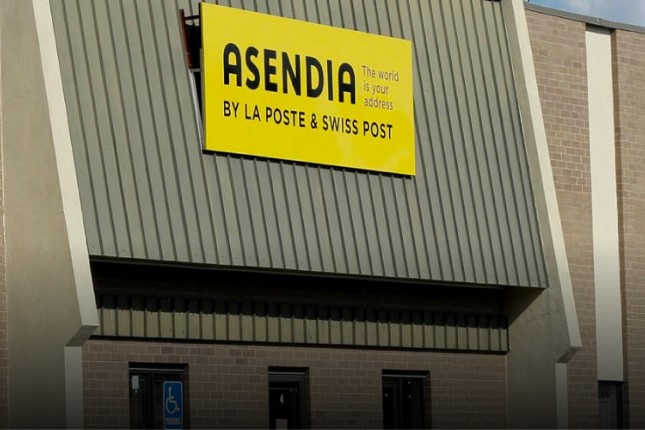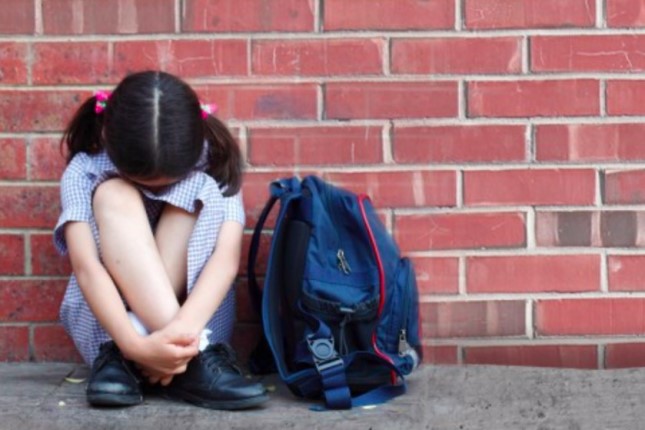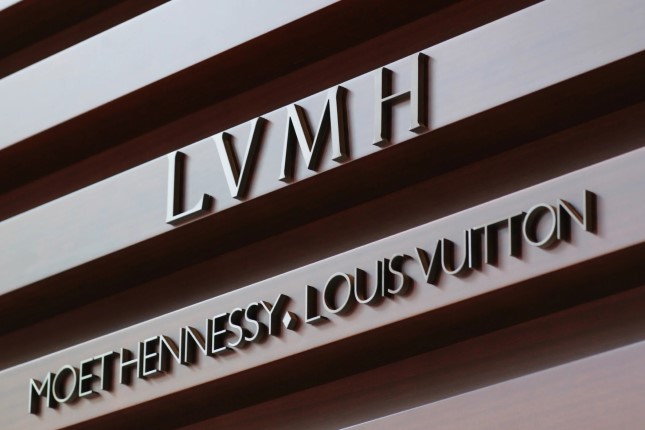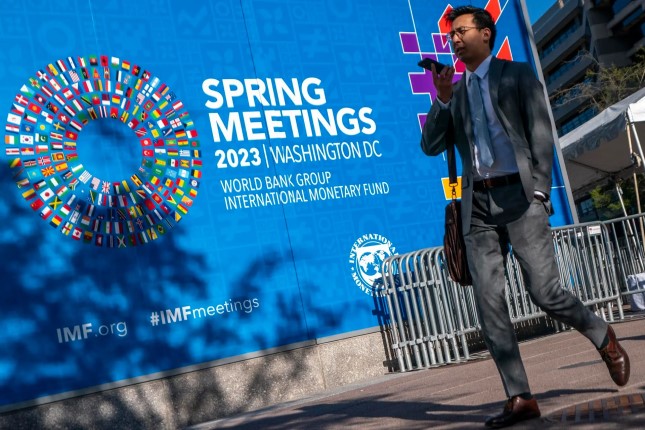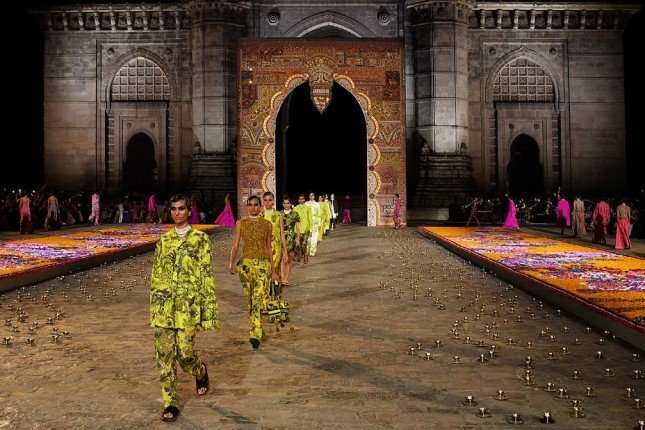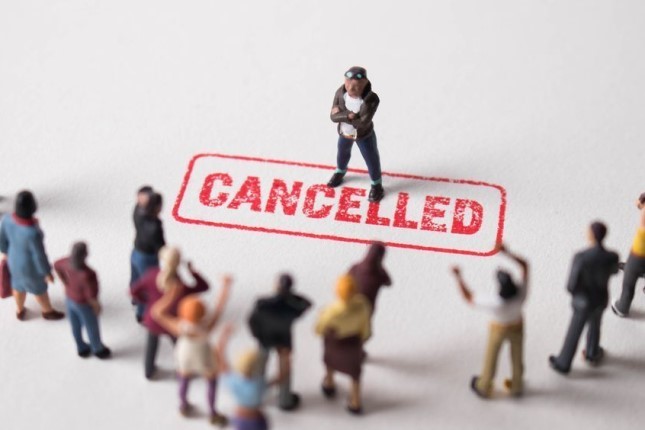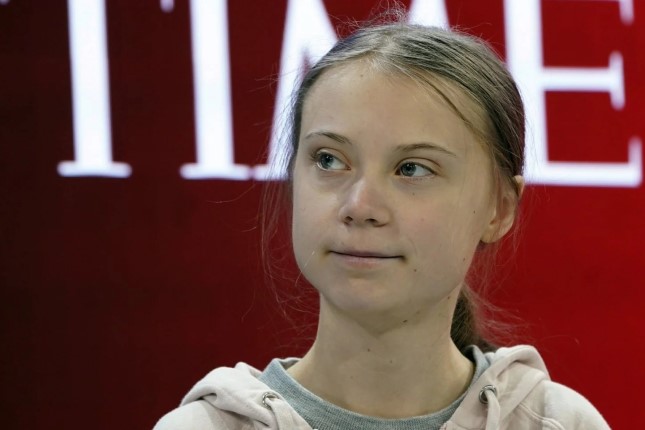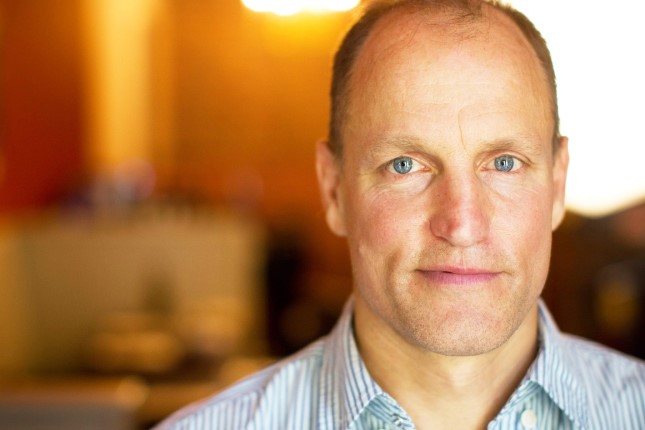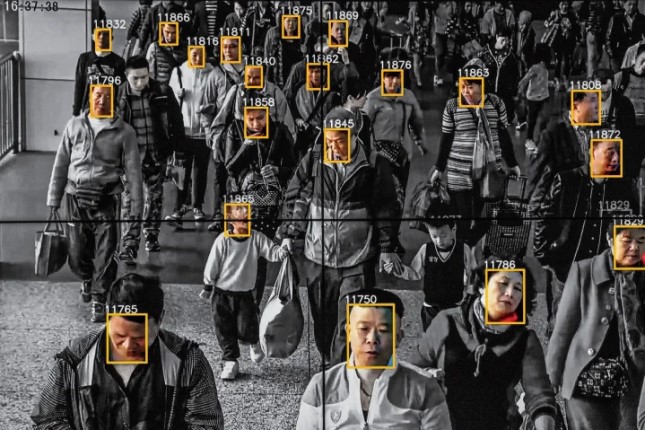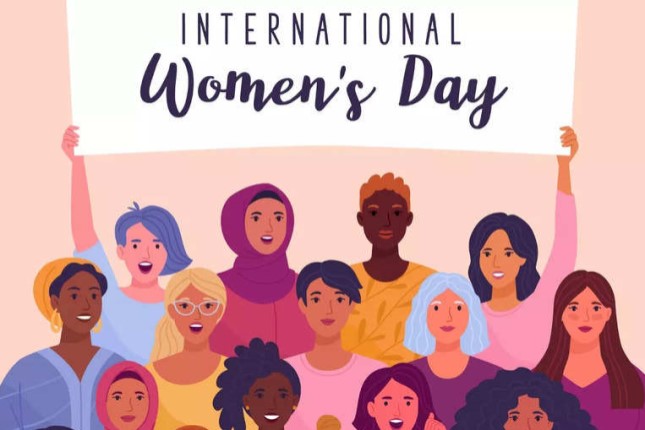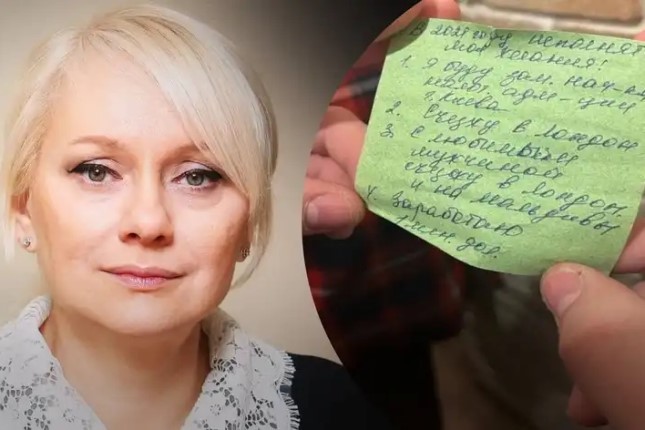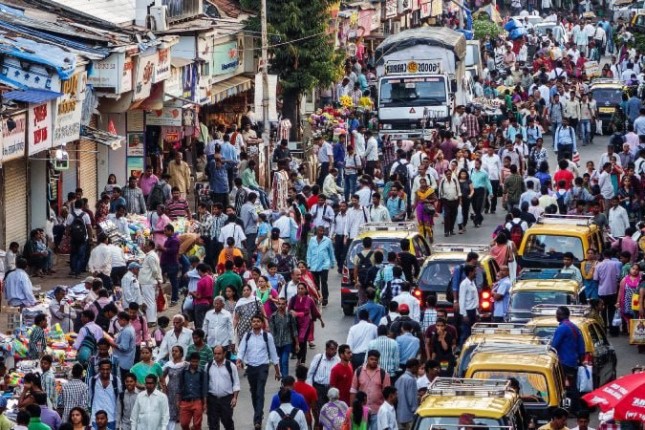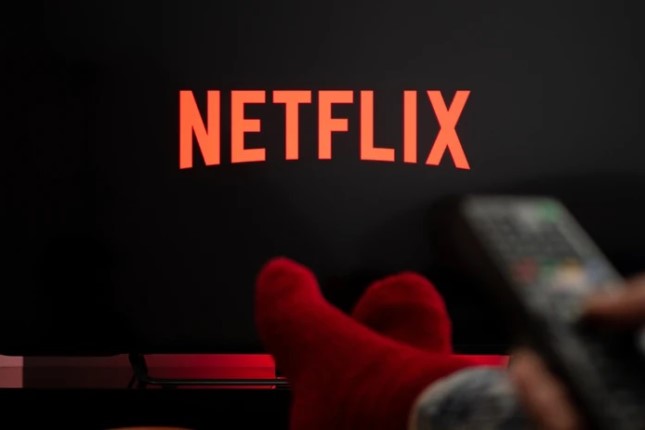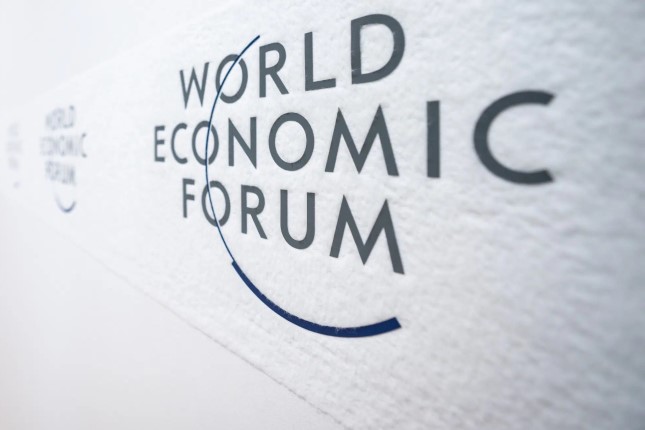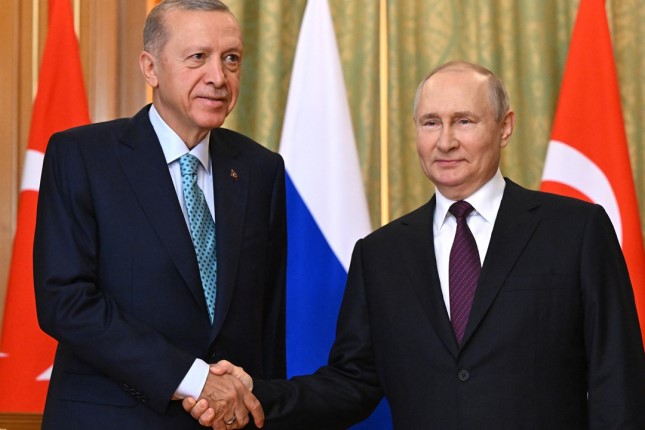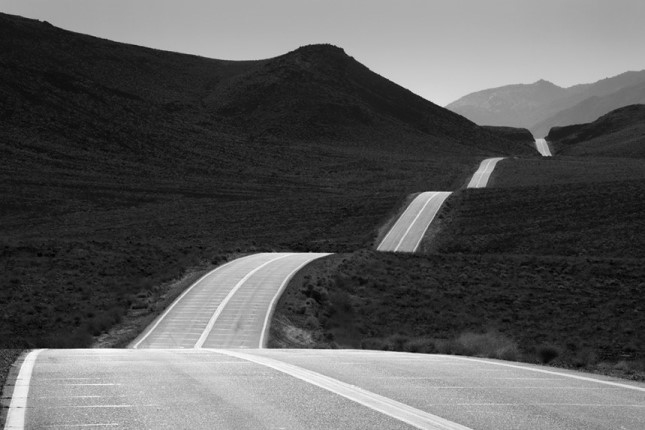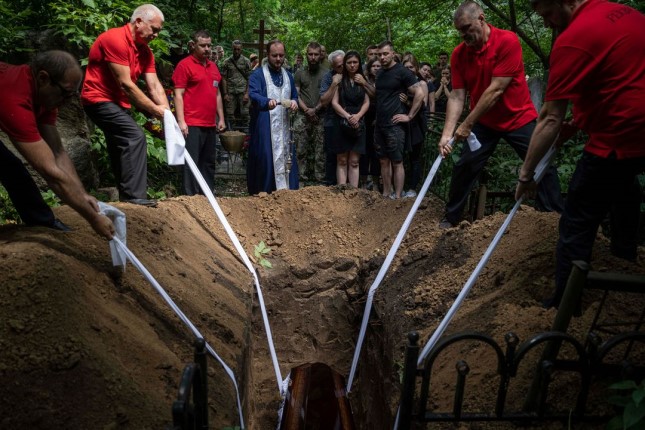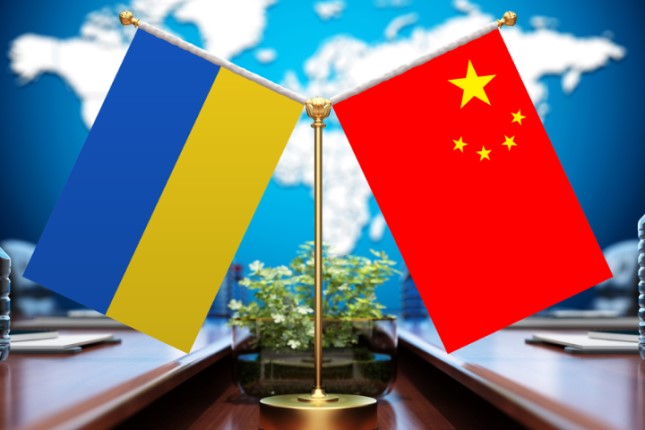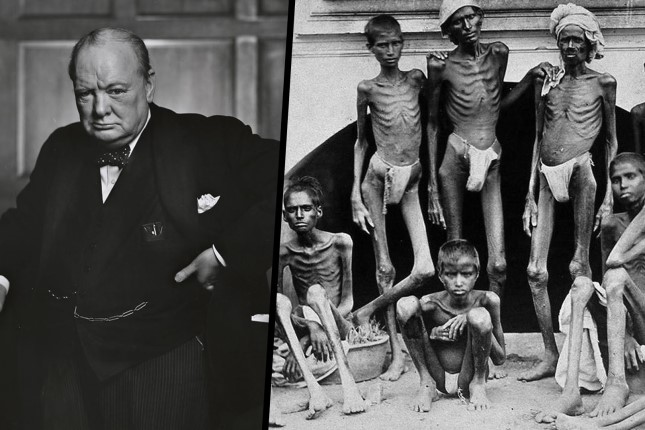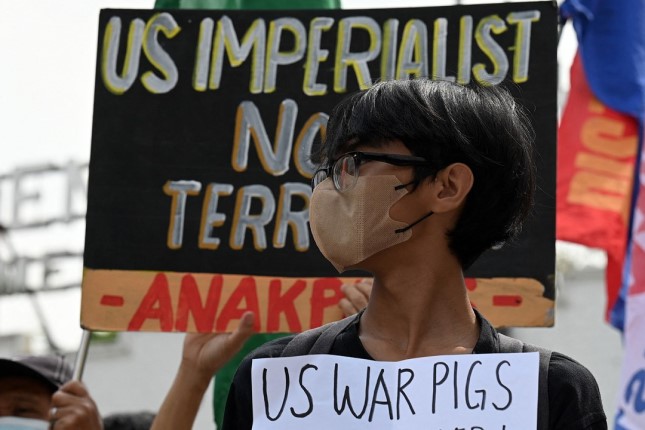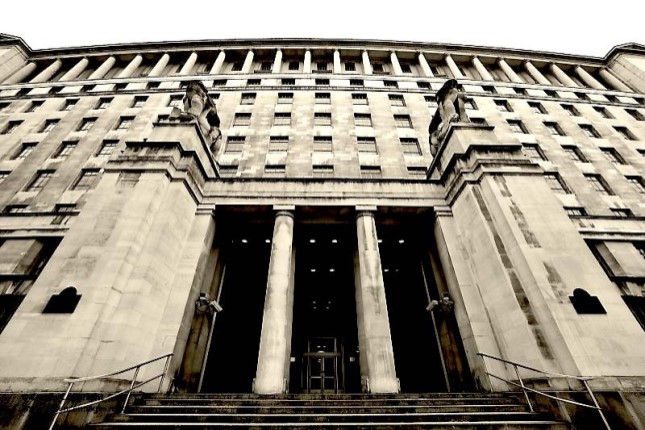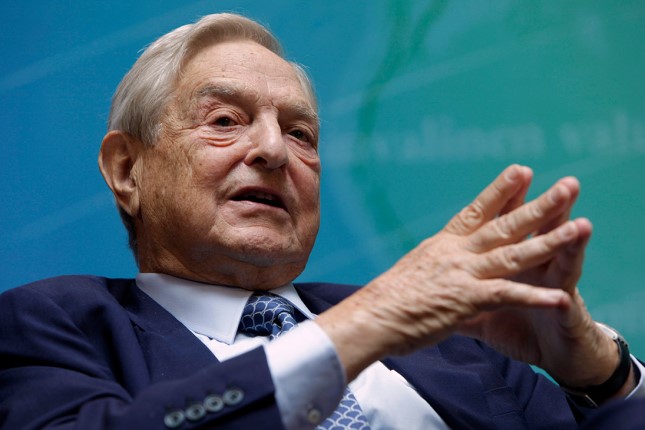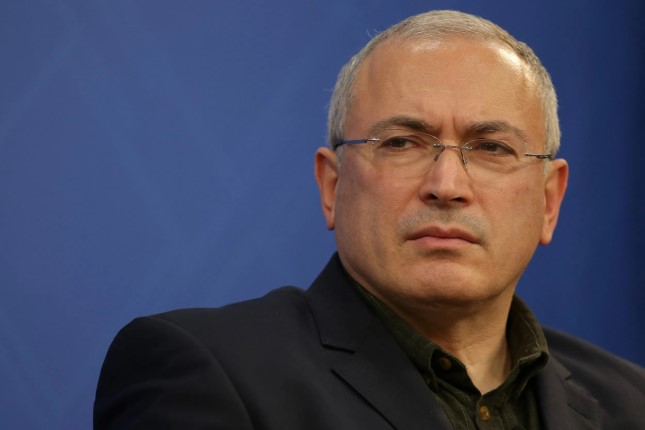On July 4, 2022, in the midst of Russia's military operation in Ukraine, a haute couture collection from one of the most famous fashion houses in the world, Dior, was shown in Paris.
There is nothing surprising about the fact that while the Slavs are fighting each other on the outskirts of the "European ecumene," the French continue their usual rich cultural and fashionable lifestyle − the same thing happened 80 years ago in the midst of World War II.
However, both then and now, there have been some fashion designers who have proved to be no strangers to the political arena (everyone knows, for instance, about Gabrielle Chanel's collaboration with the Nazis).
Thus, house of Dior creative director Maria Grazia Chiuri also decided to give fans of high fashion a hint at Dior politics: The central point in the design of the hall at the Rodin Museum where the collection was shown on July 4 (US Independence Day, by the way) was a painting by Ukrainian artist Olesia Trofymenko depicting the "Tree of Life."
"The smallest work I've ever painted in my life. And I would never have thought in my life that it would have such consequences," the artist told the Ukrainian outlet TSN amidst active discussions about the show online. The piece is about the size of a postcard (10x9 cm).
Chiuri happened upon the work at an exhibition in Rome and decided to track Trofymenko down (she was working at her veggie garden at the time, she says) to ask her to produce several versions of replicas. Then nearly 500 unnamed Indian workers quickly turned the Ukrainian artist's sketches into large embroidered panels, which eventually decorated the hall where the show was held.
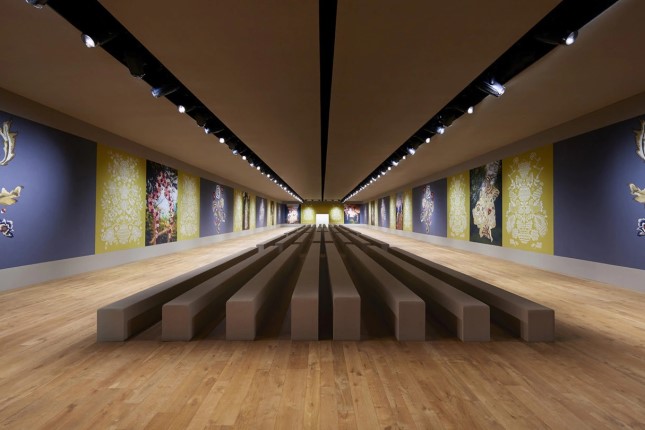
The fashion show hall.
The funniest and most typical thing about this story is the reaction of Trofymenko's fellow Ukrainians to her fleeting triumph.
"The betrayal has already begun − why it (the embroidery − Editor) was not done by Ukrainian masters... The second [betrayal] concerns the collection of Maria Grazia. There are people who don't like the fact that it doesn't show the Ukrainian national costume," Trofymenko said.
As usual, Ukrainians are not satisfied with the support they receive from Western European countries. They always want more, and they will always find something to be offended by.
"This does not mean that Dior promotes Ukraine, or that Ukrainian motifs have appeared on the catwalks of high fashion," fashion historian and critic Zoya Zvinyatskovskaya commented to TSN. "Of course, the panels were used because Ukraine is trending now. It's terrible to say, but it's trending in the news, and Dior has been hyping trends for quite some time now."
Of course, the Ukrainian fashion expert is right: This was pure hype on Dior's part. European luxury fashion houses have done the same thing in the past with a Yugoslavian theme, an African theme, and even a Russian theme.
But you can only be happy for Trofymenko: Her name has risen above that of tens of thousands of unknown Eastern European artists for a time, and she may even be able to earn a little from her fame, or successfully emigrate before the news agenda changes and forgets all about her, like countless other "kings for a day."
Many artists − not only Ukrainian, but also Russian − look to emigrate, "hyping" on the Ukraine theme.
For example, Valentina Murenkova, formerly a nun of the Russian Orthodox Church and now an artist, and her daughter Alyona Kostrichenko, a philologist and also recently an artist, have been living in Europe for some time, working as painters. After the start of the special military operation, mother and daughter began to actively produce works of an anti-war bent.
Pacifism gave their inconspicuous works pathos and helped them to find "patrons" in different European countries who gratuitously provided them with premises for the OUR HOME: UKRAINE exhibition, presenting anti-war paintings from the mother-daughter team together with the works of a couple dozen other Ukrainian and Russian emigrant painters.
Both artists and the benefactors who shelter them actively advertise the exhibition. For example, in one German city, anti-war paintings were exhibited in a restaurant, and the organizers advertised its menu.
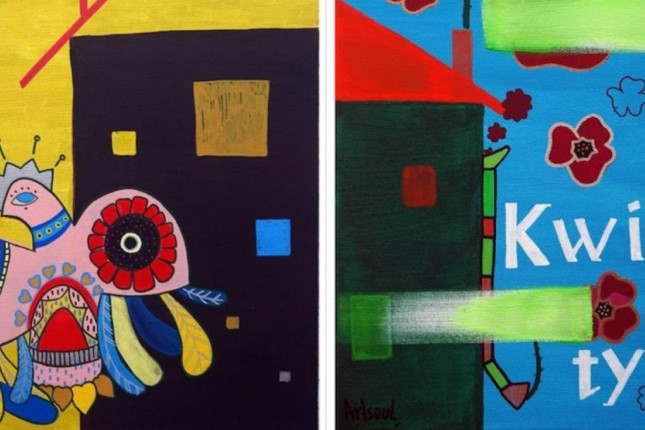
Masterpieces of the OUR HOME: UKRAINE exhibition.
In the UK, the exposition coincided with the Queen's funeral, and the emigrants noted that they even managed to "bite off" a piece of the hype pie of this politically much more important event:
"Our anti-war exhibition in Oxford continues. Alina Kostrichenko is on duty there and she says there are more visitors than we have ever had before. The theme of the war in Ukraine evokes a deep response and great interest among the British, even against the backdrop of such an epoch-making event for them as the death and funeral of Queen Elizabeth II," Murenkova joyfully reported on Facebook.
Taking advantage of her 15 minutes of fame, the former nun also promotes her video podcasts about the Russian Orthodox Church, which she harshly criticizes, like so many other disillusioned and defrocked former zealous proselytes.
Alla Georgieva, a graduate of the Kharkiv Academy of Art and Design now living in Bulgaria, produced a painting called, "She Can Pop Out More," playing off the same hype, taking its name from the sarcastic Russian saying, "women can pop out more," used in the discourse about irreparable military losses.
The artist chose a stylization of a romantic autumn landscape of the 19th-century Russian impressionist Isaac Levitan as the background of her painting. In the foreground, she depicted a rather disgusting-looking red-skinned woman, legs spread, with a roughly painted vulva, giving birth to a baby in a military helmet.
The Sotheby's Important Jewels auction in Geneva put the work of six Ukrainian jewelers and brands up for sale with no reserve (the minimum price below which the lot will not be sold). One of the lots was provided by the Oberig Jewelry brand. According to some sources, its founder, Tatyana Kondratyuk, is the wife of the former head of the Foreign Intelligence Service of Ukraine and former military attaché of Ukraine to the United States Valery Kondratyuk.
The Ukrainian works didn't bring in huge amounts, but they made a lot of noise, garnering attention from beyond the jewelry community. The participants, of course, promised the funds to affected Ukrainians (although the fate of such funds usually isn't traced).
Art and fashion are typically considered to be of secondary importance for politics. They're seen as of interest only to narrow specialists and collectors and buyers. However, social networks and the "hype" phenomenon help bring the multi-directional marketing and political actions of fashion and art figures to the surface. And these actions can bring their authors money and preferences (like the Global Talent Visa in Western European countries), but can also, in a certain sense, "brainwash" ordinary people in neutral states and influence the information agenda.
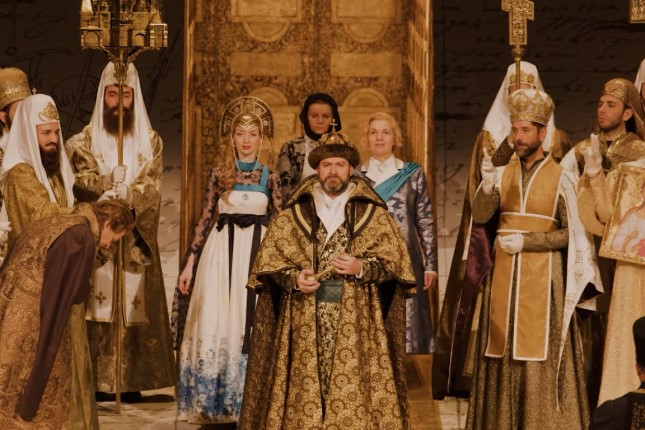
The entire political and cultural elite of Europe stood up for 15 minutes at the premiere of the 19th-century Russian composer Modest Mussorgsky's opera Boris Godunov. The royal box was occupied by Italian President Sergio Mattarella, Deputy Prime Minister George Meloni, and other high-ranking guests.
Fortunately for all Europeans who value an independent opinion, Western artists' reactions to what is happening in Ukraine is not so unambiguous, and Russophobia has not yet become the absolute mainstream. Serious artists are not so eager to hype.
Hence, at the end of November 2022, Dominique Meyer, director of the Italian La Scala, chose to move ahead in opening the theatrical season with Boris Godunov, despite the negative reaction from the Ukrainian Consul General in Milan Andrey Kartysh.
Meyer is known for his common sense, and has also refused to "cancel" the works of other great Russian composers. Thus, Italians and tourists can still enjoy not only Boris Godunov at La Scala, but also Tchaikovsky's Swan Lake and the Nutcracker.
